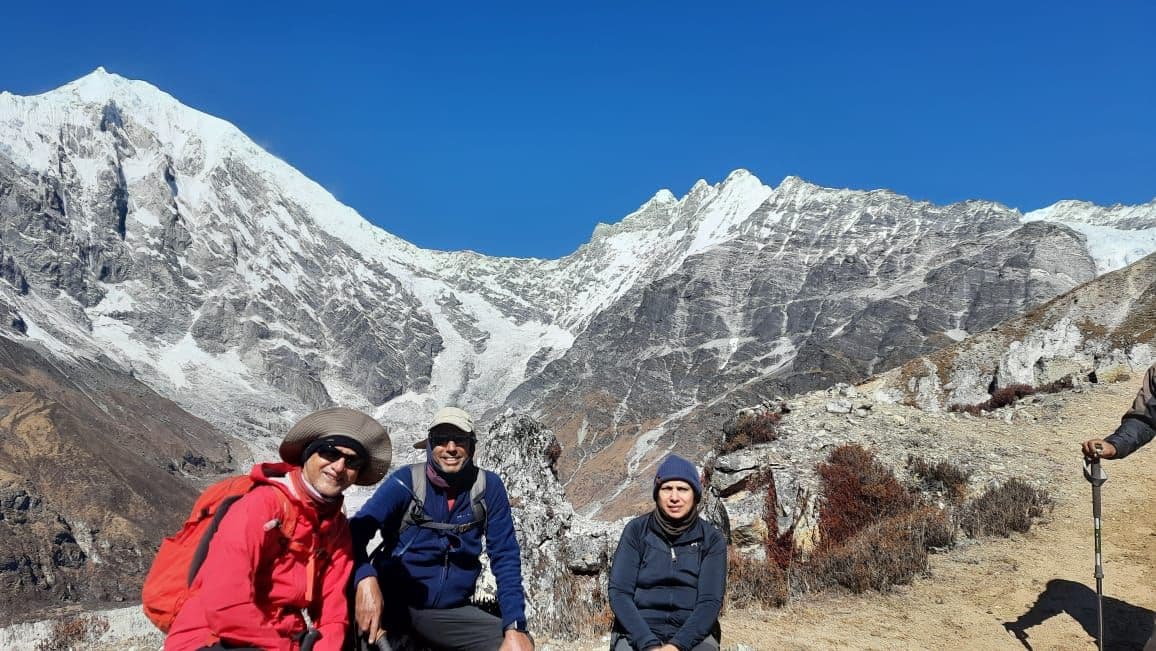
Tilman Pass Trek
The Tilman Pass Trek is a challenging and remote journey through one of the wildest parts of the Langtang Himalayas. Known for its difficulty and high altitude, this trek crosses one of the highest trekking passes in the region, linking the Langtang and Helambu areas. Unlike more frequented routes, the Tilman Pass trail remains relatively untouched, offering trekkers an authentic and adventurous Himalayan experience away from the crowds.
The Tilman Pass (5320m) trek is a challenging and remote journey through one of the wildest parts of the Langtang Himalayas. Known for its difficulty and high altitude, this trek crosses one of the highest trekking passes in the region, linking the Langtang and Helambu areas. Unlike more frequented routes, the Tilman Pass trail remains relatively untouched, offering trekkers an authentic and adventurous Himalayan experience away from the crowds.
This trek provides spectacular panoramic views of several majestic Himalayan ranges, including Langtang, Ganesh Himal, and Rolwaling. Key peaks visible along the route include Langtang Lirung, Naya Kang, Yala Peak, Langshisha Ri, Gaurishanker, and Dorje Lakpa. The trail also connects two distinct Himalayan regions—the Langtang range and the sacred Panch Pokhari, or “Five Lakes,” known for their natural beauty and spiritual significance.
Starting from Syabru Bensi, after a 7–8-hour drive from Kathmandu, the trek follows scenic valleys passing through Lama Hotel, Langtang Village,
Trip Facts
Group Size
01 to 15 pax
Maximum Elevation
5320m
Location
North-East part of Nepal – Langtang National Park and Helambu
Route
KTM-Shyabru Besi-Kyanjin- Tilman Pass- Panche Pokharai- Choutara-KTM
Grade
Strenuous plus
Best Season
Autumn (Sep. to Nov.) and spring (March to May)
Accommodation
Hotel/ Lodge and tented camping
Transportation
Drive to Shyabru besi/ from Choutara to KTM by bus/Jeep
Trek through one of Nepal’s most isolated and off-the-beaten-path trails, connecting Langtang Valley with the sacred Panch Pokhari lakes via the high and challenging Tilman Pass (5320m).
A thrilling crossing of Tilman Pass, one of the highest and most technical trekking passes in the Himalayas, offering unmatched mountain views and an authentic alpine experience.
Enjoy breathtaking views of Langtang Lirung, Ganesh Himal, Yala Peak, Langshisa Ri, Dorje Lakpa, Gaurishankar, and even distant Tibetan peaks including Shishapangma (8027m).
Visit the serene and spiritually significant Panch Pokhari (Five Lakes) and Tin Pokhari (Three Lakes), sacred pilgrimage sites nestled high in the Himalayas.
Walk through diverse ecosystems ranging from lush rhododendron and pine forests to alpine meadows. Spot wildlife such as red pandas, Himalayan tahr, langurs, mountain deer, and various bird species.
Explore traditional Tamang and Sherpa villages like Langtang, Kyanjin Gompa, and Chautara, rich in Tibetan-influenced culture, ancient monasteries, and warm mountain hospitality.
Hike up Tserko Ri (4984m) for acclimatization and 360° mountain views during your stay at Kyanjin Gompa.
Experience authentic wilderness trekking with full camping support in high-altitude remote zones beyond Kyanjin, ideal for seasoned trekkers seeking solitude and challenge.
Cross glaciers, moraines, and high mountain ridges—perfect for adventure seekers and alpine enthusiasts.
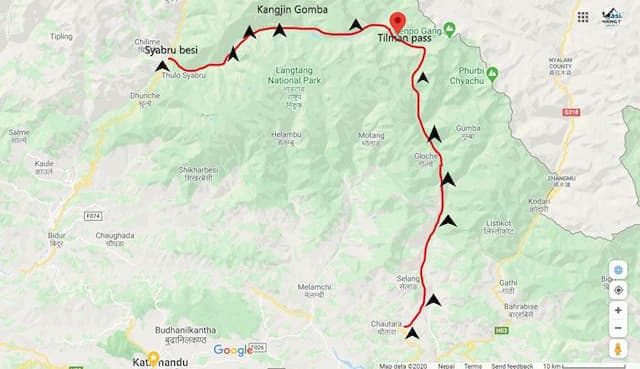
- Accommodation during the trekking: Single/Twin-sharing room with wooden beds, foam mattresses, and blankets (bring a sleeping bag for extra warmth/hygiene). Most of the place have shared toilets (usually Asian-style squat or Western toilets). Some of the place has attached toiled. Hot showers available (on extra cost). Higher up, hot water is scarce.
- Tented Camping: Tented camping is a classic and essential part of trekking, peak climbing, and expedition in remote areas of the Himalayas where teahouse accommodation is unavailable. Asian Hiking Team provides tent (2-person or single occupancy Dom and Box tent depends on area and numbers of days), sleeping mat (foam or inflatable), dining tent, kitchen tent, toilet tent (group use - for expedition), Kitchen equipment and utensils (carried by support crew), Power bank or solar charger, heater, Generator (for expedition) etc.
- Breakfast: Porridge/Oatmeal (often with honey, fruits, or nuts), eggs (fried, scrambled, or omelets with veggies), Pancakes or Tibetan Bread (served with jam, honey, or peanut butter), Muesli/Cornflakes (with hot or cold milk), Tea/Coffee (black, milk tea, or ginger lemon honey tea) etc.
- Lunch: Dal Bhat (Nepali staple: lentil soup, rice, vegetable curry, and pickles—unlimited refills!), Noodles/Pasta (fried noodles, garlic pasta, or ramen), Momos (dumplings stuffed with veggies or meat), sandwiches (egg, cheese, or tuna), soup (garlic, mushroom, or veggie—popular for warmth and hydration) etc.
- Dinner: Dal Bhat, Curries (veggie, potato, or chicken with rice or chapati), Thukpa (local noodle soup), Pizza, Pasta, Fried Rice/Noodles, Desserts (apple pie, rice pudding, or Snickers rolls etc.).
- Langtang National Park permit /entrance fees.
- Shivapuri Nagarjun national park permit.
- Local Entry permit / Entrance fees.
- Entrance fees in Monastery/temple.
- TIMS Card: No longer required, if need we will provide.
- Drive from Kathmandu to Syab**rubesi
- From Chautara to Kathmandu by jeep or bus.**
Comprehensive full-board camping or combined tea house and camping options.
- Trekking Guide: A First Aid and Eco trained & Government licensed holder professional equipped English-speaking guide.
- Support Sherpa: if the group size more than six persons, we provide one extra Sherpa to support the group.
- Porters: One Porter between each 2 members while on trek (Maximum weight for a porter is 25 Kg). If you are single booking the porter cost need to pay extra, please add the cost add on option.
- Accommodation, meals, daily salary, equipment, transportation & Insurance of Asian Hiking Team staffs (guide, Sherpa, porter).
- Trekking Map /Itinerary: Asian Hiking Team provides free a copy of trekking map /trekking Itinerary to our client.
- Sleeping Bag: Asian Hiking Team provide sleeping bag, the sleeping bag is (-20 degrees). If you are planning high passes trekking/ camping trekking or climbing you should be need to bring your own which is -30.
- T-short: Asian Hiking Team provide the company T-short for a souvenir.
- Certificate: Asian Hiking Team provide Trekking/Hiking/Tour/Climbing success certificate for your memory and awardees.
- First Aid: First aid is the immediate assistance given to someone who is injured or ill until professional medical help is available. Its goal is to preserve life, prevent further harm, and promote recovery. Asian Hiking Team staff carry the basic first aid. You need to bring your own personal medicine with you. If you are trekking in high altitude should be bringing Diamox for acclimatization (125 mg tabs recommended; enough for a week or more). You can buy here in Kathmandu any pharmacy.
- Farewell dinner: Asian Hiking Team provide a farewell dinner with Nepalese cultural programs the last day of the trip.
- Travel & Rescue arrangement service: You should bring insurance, must include emergency air ambulance/helicopter rescue services.
- Accommodation: If you stay an additional day, you need to pay an extra cost.
- Hot drinks: Tea/ Coffees/ Hot water, hot showers etc.
- Cold/soft drinks: All cold drinks, alcohol drinks, beer, bottle water etc.
- Snacks: Pack energy bars, nuts, chocolate, or local chyura (beaten rice) for quick energy boosts between meals.
- Personal trekking gears & clothing (some of the equipment is possible to rent in Kathmandu): please check in check list for equipment list
- Internet / Wi-Fi/Telephone: There are almost all trekking reason you can buy internet/ Wi-Fi service in the hotel. It is also possible to buy the NCAL or NTC Sim card for telephone or use data.
- Insurance: Medical evacuation in case of emergency, expenses incurred due to mishaps, landslide, strikes, political unrest etc. in such case extra will be charged as per actual.
- Kathmandu: During the sightseeing in Kathmandu or Pokhara the entry fees for Temple or Monastery, Durbar Square are not includes in the cost.
- The tip for guide or porter: It's a way to show appreciation for good service and is often left as a small present or in addition. Tips are a common practice in many cultures and are often expected for services. It is not fix amount, so you can own decide.
- Porter: Asian Hiking Team provide one porter between two members. If you want to hire the additional porter, the cost in not includes.
- Sherpa/ Guide: If you want personal Sherpa/guide, it is not including on the cost.
| Date | Duration | Status | Booked | Action |
|---|
Tailored add-ons in Nepal trips refer to customizable essentials that enhance and personalize your travel experience.
Options include:
- Customized Accommodations: Upgrade from standard lodging to luxury hotels or homestays.
- Helicopter/MT Flights: Opt for helicopter transport to your own destination, helicopter flight/ Mountain flight (as for cost, it depends on).
- Adventure Activities: Add paragliding, bungee jumping, or rafting.
- Cultural & Spiritual Journeys: Include visits to Lumbini, Pashupatinath, tours or local festivals.
- Wildlife Safaris: Extend your trip with a safari in Chitwan or Bardia.
- Flexible Scheduling: Adjust dates and durations to fit your needs.
Asian Hiking Team’s trekking Guides are professionals with recognized records of honesty and personal integrity, committed to environmentally responsible trekking practices that minimize ecological impact.
Asian Hiking Team trekking guide duties are to navigate trails, ensure safety, explain local culture/history, arrange permits/accommodations, monitor altitude sickness, and manage logistics. Our guide is fluency in English (and other languages), first aid certification, cultural knowledge, and government licensing. Require Nepal Government licensing, formal training (e.g., Nepal Academy of Tourism/NATHM), first aid certification, and language proficiency. Our guide is friendly, professional, and well-mannered. Trained in customer service, problem-solving, and group handling.
Asian Hiking Team porter: Porters duties are carrying trekker luggage (max 20–25 kg), transport equipment, and assist with camp setup. Physical endurance, basic trail familiarity, and teamwork. Most speak minimal English. No formal credentials, but reputable agencies ensure health checks, basic safety training, and gear provision etc.
Asian Hiking Team Porter-Guides: Porter guide is...
Tilman Pass Trekking is grade D trek in Nepal. Trekking in Nepal is categorized into grades based on altitude, terrain difficulty, remoteness, and daily walking hours. The most widely used grading system includes Easy, Moderate, Strenuous, and Challenging.
Easy (Grade A)
Altitude: Up to 3,000 meters (9,800 ft) Walking Hours: Max 3–5 hours per day Terrain: Well-established trails, gentle ascents/descents, minimal steep sections. Who is it for? Beginners, families, or those with limited time seeking cultural experiences and Himalayan views.
Moderate (Grade B)
Altitude: 3,000–4,500 meters (9,800–14,700 ft) Walking Hours: Max 7 hours per day Terrain: Mixed trails with some steep climbs and high passes, moderate altitude gain. Who is it for? Trekkers with average fitness and some prior hiking experience.
Strenuous (Grade C)
Altitude: 4,500–5,500 meters (14,700–18,000 ft) Walking Hours: Max. 8 hours per day, often for 2–3 weeks Terrain: Remote, rugged trails with high passes; risk of altitude sickness increases. Who is it for? Fit trekkers with prior multi-day trekking...
Hotel/ Lodge: Single/Twin-sharing room with wooden beds, foam mattresses, and blankets (bring a sleeping bag for extra warmth/hygiene). Most of the place have shared toilets (usually Asian-style squat or Western toilets). Some of the place has attached toiled. Hot showers available (on extra cost). Higher up, hot water is scarce.
Tented Camping: Tented camping is a classic and essential part of trekking, peak climbing, and expedition in remote areas of the Himalayas where teahouse accommodation is unavailable. Asian Hiking Team provides tent (2-person or single occupancy Dom and Box tent depends on area and numbers of days), sleeping mat (foam or inflatable), dining tent, kitchen tent, toilet tent (group use - for expedition), Kitchen equipment and utensils (carried by support crew), Power bank or solar charger, heater, Generator (for expedition) etc.
Meals: During the hotel/guest house trekking, there are international menus so you can choose whatever you like. During the camping,...
Here’s a detailed guide on getting from Kathmandu to Shyabru Besi (Syabrubesi) and Dhunche, the main trailhead towns for treks like Langtang and Gosaikunda and Helambu areas:
Kathmandu to Dhunche / Shyabrubesi 122KM
Public / Deluxe Bus/ share Jeep Departure: Daily from Machhapokhari (New Buspark) north of Thamel between 06:00–09:00 AM Journey time: To Dhunche - 4-5 hours and To Syabrubesi 5-7 hours Shared Jeep: Shared jeeps also leave from Machhapokhari from 07:00 AM to 8AM. Private Jeep / 4WD Car: Advantage: Best for Small groups (4–7) or seeking flexibility and comfort. Journey time: To Dhunche - 4-5 hours and To Syabrubesi 5-7 hours Cost: Every season all cost are changeable so please check by email or WhatsApp for recent cost.
Chautara to Kathmandu
By Local bus – Ratnapark or Chahabel or Bus park By Taxi/ Car private - Direct pickup from your hotel, more comfort, flexible departure time, luggage-friendly. Cost: Every season all cost are changeable, so please...
General Climate
Overview Nepal's climate is incredibly diverse due to its dramatic range in altitude—from the lowland Terai plains (around 60 meters above sea level) to the Himalayan peaks above 8,000 meters. The country experiences five main seasons: spring, summer, monsoon, autumn, and winter. Each region and elevation zone has its own unique weather patterns.
Terai Region (Southern Plains)
Climate: Subtropical Summer (May–June): Hot and humid, temperatures often exceed 37°C Winter (Dec–Feb): Mild, temperatures range between 7°C to 23°C Receives significant rainfall during the monsoon (June–September)
Hilly Region (Mid-Hills & Valleys)
Climate: Mild and temperate Cities like Kathmandu and Pokhara experience: Summer: 19°C – 35°C Winter: 2°C – 12°C Pleasant weather year-round with occasional winter chills and summer showers
Mountain Region (High Himalayas)
Climate: Alpine to Arctic Summer: Cool to cold, depending on altitude Winter: Severe cold with frequent snowfall Temperatures can drop below -20°C at high passes and base camps Monsoon rains are lighter, but weather remains unpredictable
Nepal experiences four distinct...
You’ll need one main permits:
Langtang National Park Entry Permit Foreigner: NPR 3,000 (USD 25–30) SAARC national: NPR 1,500 Nepali citizen: NPR 100 Validity: One month from issue date. Coverage: Entire Langtang National Park, including trails to Kyanjin Gompa, Gosaikunda, and Tamang Heritage. Guide Mandatory: Solo trekking is prohibited. All trekkers must hire a licensed guide through a registered agency. Checkpoints: At Dhunche (park entry), Syabrubesi, and Langtang village (fines for missing permits), Kutungsang,
Sundarijal, Sarmangthang.
Shivapuri-Nagarjun National Park Permit: Cost: Foreigners: NPR 1,000 ($8); SAARC: NPR 600 and Nepali Nrs 100 Check post: Sundarijal, Chisapani etc.
TIMS Card:
No longer required for Langtang / Helambu treks however if need will provide.
Why These Permits Matter:
• Conservation: Wildlife protection (snow leopards, red pandas), trail maintenance, and reforestation. • Community Support: Healthcare, schools, and tourism infrastructure. • Safety: rescue operations during emergencies (e.g., landslides)
Altitude Mountain Sickness (AMS)
Trekking in the Himalayas poses risks of Altitude Sickness (AMS). The body needs time to acclimatize to higher altitudes, a process known as acclimatization.
Types of Altitude Illnesses (Acute Mountain Sickness, AMS)
- High Altitude Pulmonary Edema (HAPE): Fluid in the lungs
- High Altitude Cerebral Edema (HACE): Swelling of the brain
- High Altitude Retinal Hemorrhage (HARH): Bleeding in the retina
Common Symptoms:
- Headache
- Nausea, loss of appetite
- Sleep disturbance
- Dizziness, mild weakness
- Swelling of hands and face
Severe Symptoms (Seek Immediate Descent):
- Severe, persistent headache
- Shortness of breath at rest
- Confusion, loss of coordination
- Bluish lips or face
- Coughing blood-tinged sputum
- Coma or unconsciousness
Prevention Tips:
- Drink 4–5 liters of fluids daily (avoid alcohol)
- Ascend slowly and rest if symptoms appear
- Avoid sleeping at a higher altitude if symptoms persist
- Take Diamox (consult your doctor) before flying to altitude
Food & Water Safety
In Nepal, water and food contamination are common causes of illness.
Do:
- Drink boiled, filtered, or bottled water
- Eat thoroughly...
Telephone service in the Langtang-Helambu region is available in towns and villages, but signal strength is unreliable in higher and more remote areas. Most of the place has local telephone. Both Nepal Telecom (NTC) and Ncell are the main mobile providers, with NTC generally offering better coverage in the mountains, though Ncell is faster in lower-lying towns. You can buy a local SIM card in Kathmandu. NTC/NCELL SIM cards work in most areas along the Langtang trekking route; however, network coverage is unavailable upper Langtang valley, Tilman pass, Ganjala Pass, Lauribina pass. In case of emergencies, a satellite phone is used for communication.
Internet service is available in the Langtang-Helambu region primarily through a lodge-to-lodge Wi-Fi system or via mobile data from a purchased SIM card. Fixed-line broadband is not available on the trekking routes, so it is recommended to buy a local SIM card from companies like Nepal Telecom (NTC)...
Travel Insurance & Emergency Evacuation
At Asian Hiking Team, we strongly recommend that every participant takes out comprehensive travel insurance that includes:
- Trip cancellation coverage
- Emergency air-ambulance/helicopter rescue services
Please be aware: many standard travel insurance policies do not automatically cover high-altitude trekking, helicopter evacuation, or rescue from remote mountain areas. You must ensure your chosen policy explicitly includes the activities and environments of your trek.
Additionally:
- You must carry proof of insurance (for example, a certificate or policy document) with you at the start of your holiday.
- If you cannot produce valid insurance at departure, you will be required to obtain a suitable policy immediately.
- If you fail to secure the required cover or cannot do so for practical reasons, you will not be permitted to participate in the trekking or climbing trip, and you will not be eligible for any refund for services not provided.
- Your insurance must...
Of course. Here is the information condensed into short, clear paragraphs: At Asian Hiking Team, we believe in transformative journeys that are also respectful and responsible. Our core values ensure our operations benefit both travelers and the local communities and environments we visit. We are deeply committed to environmental responsibility. Our practices include limiting group sizes, eliminating single-use plastics, properly disposing of all waste, and minimizing our impact on trails and water sources to preserve Nepal's natural beauty. We guide our travelers to practice cultural respect by honoring local customs. This includes dressing modestly, always asking for permission before taking photos, and supporting the local economy by dining at local establishments and purchasing directly from artisans. We believe in giving back. A portion of our profits is donated to community projects, and we organize clean-up campaigns and support local cooperatives. Your safety is our priority, provided through fresh meals, 24/7 support, and trained staff...
Trekking Poles: : Poles come in handy for balance and easing impact to your knees. Get collapsible poles that can attach to your backpack and fit into your Duffel.
Back pack/ Cover: : You may choose to bring a smaller "day pack" for your airline travel carry on, and this can be used on the trek if you want to carry a smaller (35 liter or so), light trekking pack. You need a pack big enough for your clothes, water, camera, food, etc. during the day.
Sleeping Bag: : Bring a sleeping bag comfortable to -20 for trekking, however it is better to bring -30 to -35 for climbing. During the trekking in hotel/guest house -20 is fine but on the tented home you need -30 or -35. Down is lighter and much more compressible. Keep in mind that many of your nights will be much warmer than -20, especially on the trek in to base camp.
Duffel Bags: : Asian Hiking Team provide one duffel bags to each member as you want. We normally pack all our equipment in large Duffel bags. Make sure they are well labeled with indelible ink as well as a travel tag. The duffels go on the trek/climb with you and will be carried by porters or yaks. Except for them to get wet and muddy, so rugged, waterproof duffels are good. Bags with wheels are nice for the airport, but the porters and yaks don't like to carry them, so don't bring wheeled bags (or at least not two of them). You will also store some travel clothes at the hotel in Kathmandu while trekking, so a small additional bag with a lock might be handy. Bring 5 large plastic garbage bags to pack gear inside duffels to protect gear from rain.
Footwear Items: : Hiking Boot: These boots provide more stability and ankle protection against protruding limbs and rocks than hiking shoes do. Mountain walking or hiking boots are designed for mountain and hill walking, backpacking and mountaineering. Gaiters and Micro spikes: if you are trekking in high passes you should prepare gaiters and Micro spikes in case of snow. You can buy in Kathmandu. Sport sandals: Sandals (such as Teva's) are lightweight and tough, doubles as shower slippers. Socks: Three/Four sets of warm socks.
Necessary Clothes: : Jacket: Lightweight waterproof-breathable construction with a hood -20 Down Jacket. Pants: Lightweight waterproof-breathable hiking pants with full-length leg zippers. Mountain Hardware Compressor Pants or anyone. Trousers: Water-resistant hiking pants (for TK), North Face and Patagonia are good brands, avoid jeans, pants with zip-off legs can come in handy. T-Shorts: 1/2 pair of t-shorts (for TK), walking shorts. Loose and comfortable, preferably nylon, which (for men) double as a swimsuit. (Avoid shorts which are too revealing.) T-shirts (TK/TR). Over-shirt: 1 long-sleeved over-shirt, light to medium weight and breathable, to protect you from the sun and bug bites. Hemp, linen or cotton is recommended. Mid-Layers: Fleece or Soft Shell layering pieces that work well with the rest of your clothing. A Soft Shell jacket and an expedition weight long john top will work well. Base Layers: - 2 synthetic tops and 1 bottom. Zip neck tops are the way to go. Light Gloves/ Leather gloves: A warm insulated glove with leather palm will be worn a lot of the time. Polypropylene or fleece. Leather palms handle the fixed line better. Or good abrasion resistant climbing glove for the rock sections. Belt: 1 belt, cotton or nylon lashing strap doubles as a gear strap. Hat: Wool or fleece stocking hat with ear protection and Sun hat. Neck Gaiter and/or a Buff (highly recommended), Baseball hat and Bandana. Underpants/panties, Bra: 2–3 pairs.
Travel Items: : Passport (valid for at least 6 months): It is easy to get your Nepal visa on arrival in Kathmandu at the airport, bring a passport photo. Bring a copy of the information pages and a couple of extra passport photographs. Carry these in a separate location. You'll be glad you did if you ever lose a passport. Camera: with spare batteries, and film or memory cards, but keep it reasonable and weight. Consider a small USB drive to make it easy to share photos with your teammates. Travel Wallet: Some type of secure travel wallet is a must. Remember a pen for travel documents. MP3 Player and Books: As you want to read on the way to trekking. Plan on sharing books on hotel/guest house or MP3 player. Chemical Hand Warmers (not compulsory).
First Aid : Hand sanitizer (Pirelli), moleskin or Compete, athletic tape, aspirin (some climbers take a baby aspirin every day up high) and/or ibuprofen / acetaminophen, Imodium, Band-Aids, antacid, insect repellent, ear plugs, and two rolls of toilet paper in quart Ziploc bags (we will have a supply at Base Camp), small towel, soap/shampoo. Eyewear: Bring good sunglasses with side protection. For contact lens wearers, ski goggles with light colour lenses (for use at night) might be useful in windy conditions. The ski goggles are essential for all climbers in really stormy conditions and can serve as an emergency backup for broken or lost sunglasses. Vision correction: Bring extra prescription eyeglasses or contact lenses if you wear them. Lens solutions are not widely available in Nepal, bring enough for the duration. Prescription Medications: Antibiotic for upper respiratory problems, Antibiotic for GI problems, Diamox for acclimatization (125 mg tabs recommended; enough for a week or more), Tylenol 3 or similar for severe headaches, Asthma medication, if any history. Skin Care: Sun block lotion (at least #30 protection factor -- have at least one smaller tube (1 oz) that can fit in your pocket) and lip salve. Put your lip protection on a string and hang it from your neck. That way you'll use it. It also works great for your nose. Wrist Watch: With alarm and night light. An altimeter watch is useful.
Headlamp: : Bring a good LED headlamp with 2 sets of lithium batteries for cold conditions.
Water Bottles: : 2 wide mouth plastic water bottles with insulated covers. A small Thermos bottle is great for cold mornings. Bring a pee bottle too (optional: Water purification: Iodine tablets (Potable Aqua or similar) or iodine crystals (Polar Pure). One bottle of Potable Aqua (enough to treat 25 liters) should be more than sufficient.

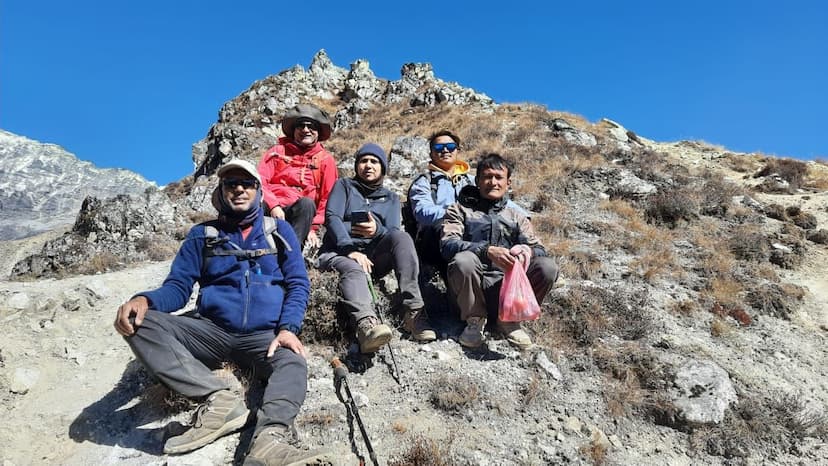 0
0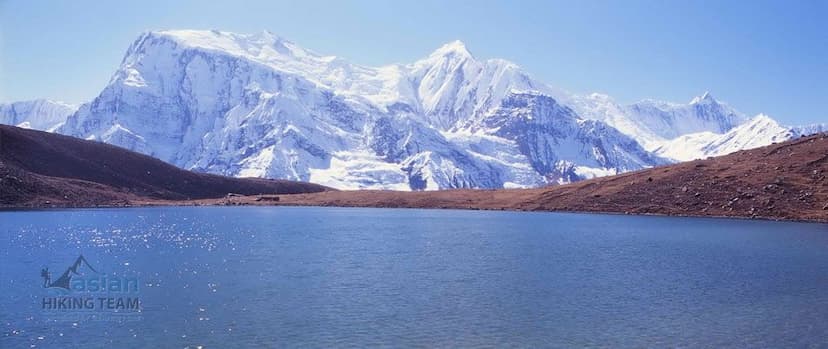 0
0

 0
0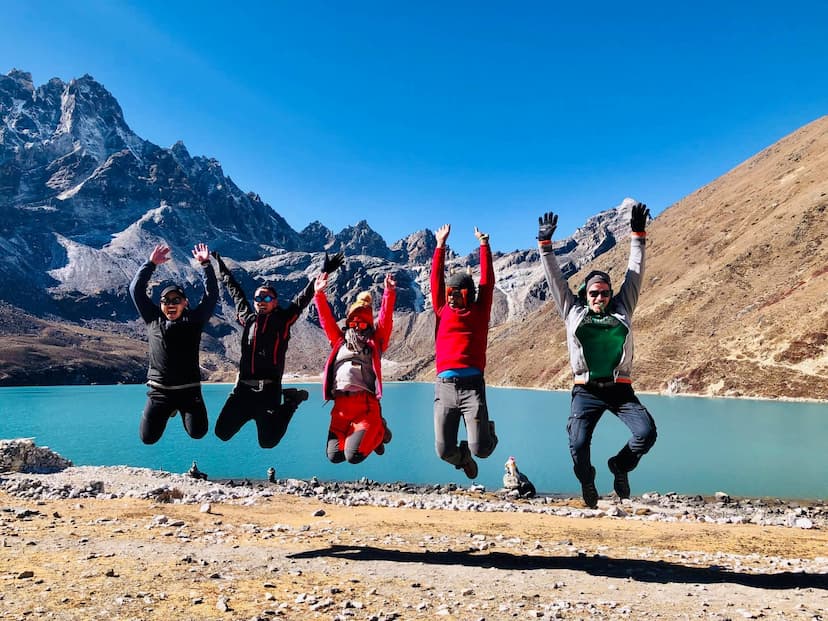
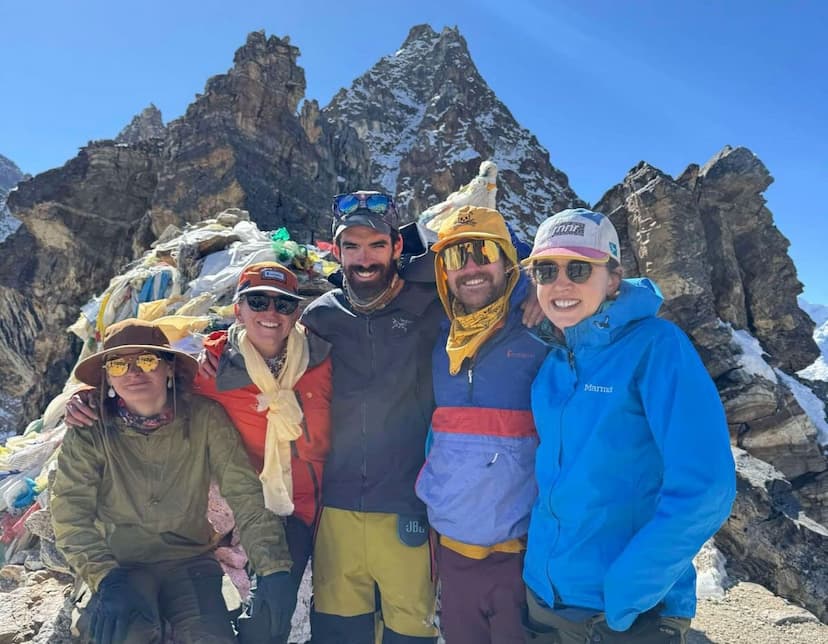 0
0
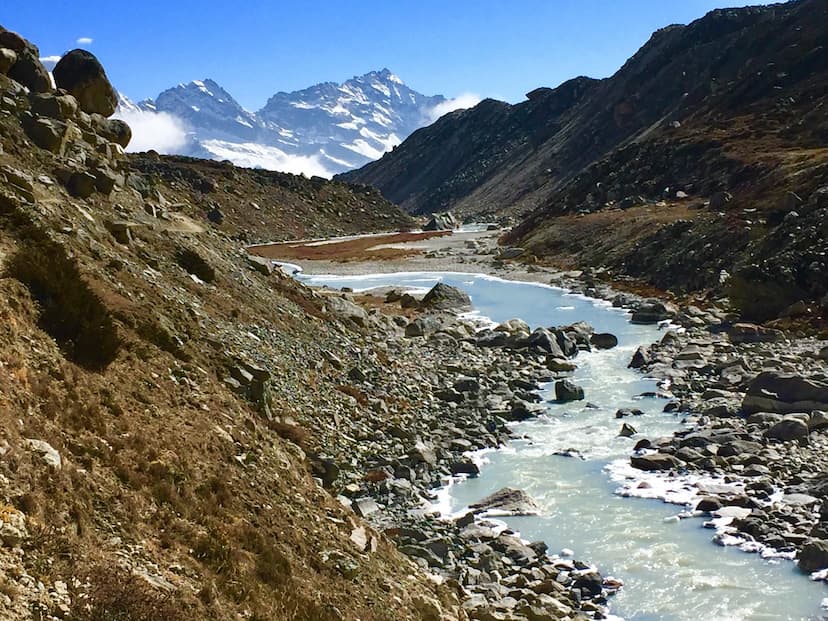
 0
0